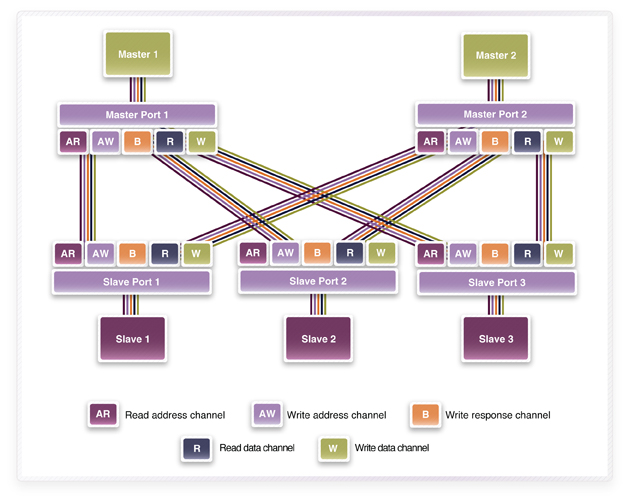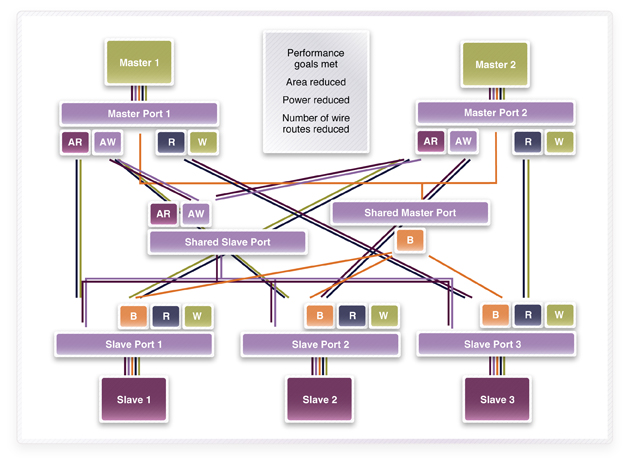Synopsys IP Technical Bulletin Article

Introducing the Hybrid Architecture for the DesignWare Interconnect Fabric for the AMBA 3 AXI protocol
The new Hybrid architecture for the DesignWare Interconnect Fabric for AMBA 3 AXI enables the combination of dedicated high performance channels with lower performance shared channels. By eliminating redundant logic and wires designers are able to realize lower area, power and reduced routing congestion. The new interconnect fabric architecture has been validated against the "AMBA 3 Assured" DesignWare Verification IP ensuring adherence to the AMBA 3 AXI Specification. Automated configuration and assembly with Synopsys' coreAssembler tool enables the IP to be rapidly deployed into the design environment.
Fig 1 - Traditional AMBA 3 AXI architecture: consists of individual dedicated buses that service specific master and slave devices
Up till now the standard AMBA 3 AXI interconnect fabric implementation as represented in Fig 1 targets the high performance SoC requirement by offering a multiple address, multiple data architecture which supports parallel traffic from independent masters and slaves. On a per master-slave link basis you have independent address, data and response channels, resulting in a full multiple address, multiple data architecture, capable of supporting even the most demanding system bus bandwidths requirements. While many component connections within a high performance SoC will require such a high bandwidth, there are also masters and slave connections which do not. For these system elements, a full multiple address multiple data architecture introduces a considerable amount of redundant logic which wastes die area, power and adds complexity to routing.

Fig 2 - Advanced hybrid architecture for the AMBA 3 AXI interconnect: provides a choice of connecting the master-to-slave link via a shared or dedicated bus within a single AMBA 3 AXI on-chip bus interconnect
Search Tools




